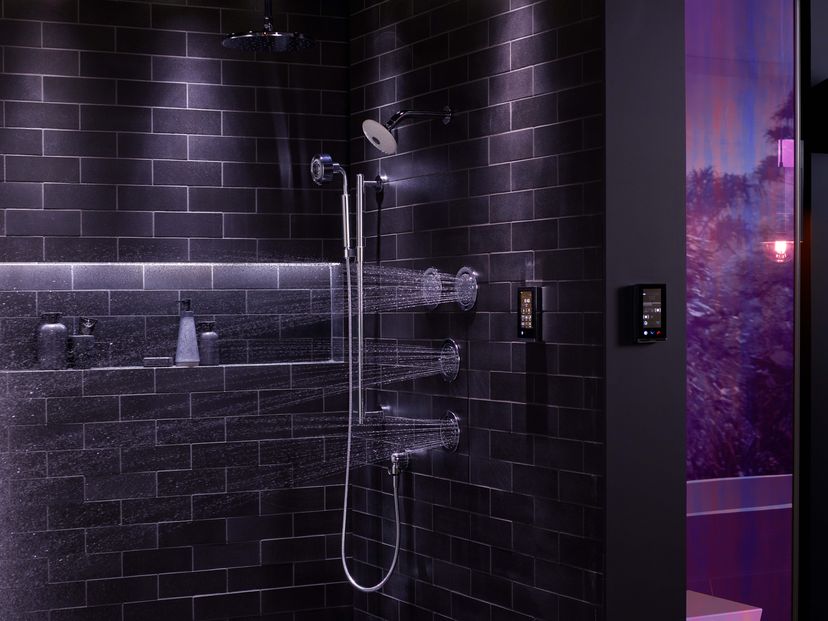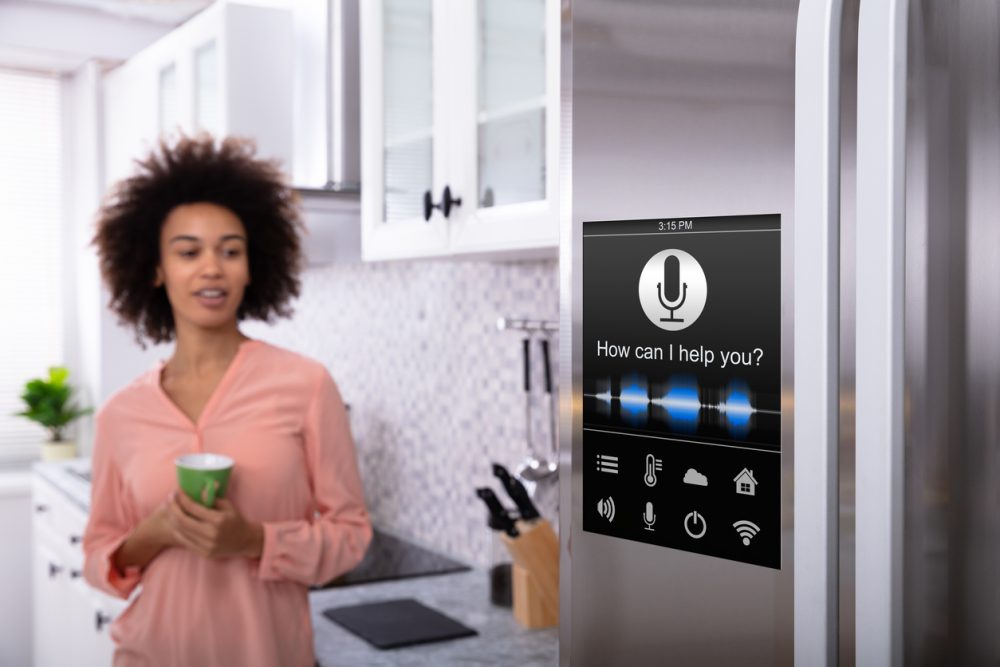Home remodeling from kitchens to bathrooms, has been one of the economic success stories of the pandemic. According to Harvard’s Joint Center for Housing Studies, remodeling spending in the U.S. has risen from $332 billion USD in Q1 2020 to $368 billion by the end of last year – and that number is forecast to increase $432 billion by the close of 2022. The home technology industry has certainly felt the benefit of this nest-feathering: spending on consumer technology rose at very similar rates to remodeling in 2020 and 2021, according to the Consumer Technology Association (CTA).
Dealers should be paying attention to Venn Diagram overlap between remodeling and technology consumer spending. Historically, homeowners invest more dollars per square foot overhauling their kitchens and bathrooms than any other room in the house. As it happens, these rooms are also the current focus of immense home technology innovation. In 2022, any conversation about a major kitchen or bathroom renovation should include a discussion of how the homeowner wants to update the technology in the space.
Particularly in the upscale and luxury sectors of the market, every room in the house is getting smarter. Elegant, Instagram-worthy aesthetics are still the expectation, but increasingly, homeowners are expecting their homes to work for them, taking care of mundane tasks like closing the blinds and lowering the lights, warming the sheets, or cooling the gym, locking the door and securing the network. This expectation – for both beautiful design and thoughtful functionality – is opening customers’ minds to tech-enabled experiences in rooms that have traditionally been stuck firmly in the mid-20th century. Homeowners are exploring how they can create more zones within the home that serve the diverse needs of their lives.
The At-Home Spa Experience
Master bathrooms often endeavor to evoke a spa experience. Here’s the problem, though: a spa has a staff. Creating your own at-home experience – drawing the perfect bath, setting the lights and music just so, prevailing on your partner to warm your towel in time for your emergence – is a lot of hassle for a little relaxation. In today’s luxury smart bathroom, much of that work is done by the room itself. For example, Kohler’s new PerfectFill technology allows homeowners to fill a bathtub to their exact specifications – timing, depth, and temperature – with a voice or mobile app command. It’s an approach that makes preparing a relaxing bath much more like booking a spa treatment.

Once the spa experience begins, interruptions should be kept to a minimum. The homeowner doesn’t want to have to get out of the bath to adjust the lighting, the volume of the music, or the temperature of the air. More than perhaps any other room in the house, bathrooms can benefit from voice control. HVAC, lighting, audio, and now water temperature and flow systems can all be operated via vocal commands. With the assistance of a professional integrator, these systems can be integrated together to act in harmony, creating a true at-home spa experience without the obligation to act as both customer and staff.
The Clever Kitchen
All the leading appliance manufacturers, including LG, GE, Bosch, and Monogram, are emphasizing the smart capabilities of their products. In isolation, smart appliances can seem like a curiosity – does a blender really need to be part of the Internet of Things? – but their value is revealed as part of an integrated system. A smart appliance can talk to any other smart devices that are part of the kitchen renovation, which can lead to some very clever conversations.
In a kitchen with well-integrated technology systems, any single action by the homeowner might trigger a number of automated responses that all subtly work together to improve the function of the space. Starting the range hood fan might increase the volume of any music or videos playing. Igniting a stove burner could automatically turn on task lighting overhead. Opening the refrigerator for a midnight snack could also turn on soft, low lighting to guide you back to bed.
The modern kitchen is a vibrant, multi-use space: equal parts workspace, gathering place, and entertainment venue. Many homeowners have “scenes” for entertaining, relaxing, and other activities, programmed to initiate specific lighting levels, colors, and music. Smart appliances can be integrated into those scenes, not only matching their lighting to the environment, but – for example – increasing cold airflow into the refrigerator or wine cooler to account for frequent openings. Very few “smart devices” have value on their own, but they can work together in fairly magical ways.
Getting Down to Brass Tacks
For both kitchens and bathrooms, there is an important reason to raise technology upgrades during a larger remodeling phase, and it’s not that the customer’s wallet is already open. Rather, it’s to save significant money redoing work in the future. Homeowners will get by far the most value out of their smart systems if they are integrated during either the initial build or a significant renovation. Some of the most exciting kitchen and bathroom technology capabilities – Kohler’s smart shower controls, for instance – require wiring and infrastructure behind the tile. Retrofitting these systems after the room is otherwise complete isn’t just inconvenient; it’s actually impossible. If they don’t have proper guidance, customers may miss the window on these elevated experiences.
Homeowners will also miss out if they try to cobble these experiences together entirely on their own. The smart kitchen and bathroom may now have access to classic design, but the technology is still cutting edge. This is why Kohler has joined with other manufacturers in emerging markets by becoming part of CEDIA’s Propel program: they know they need to be able to connect their customers to experienced custom technology integrators to deliver on the full promise of their innovations.
Dealers as a whole would be well-advised to follow Kohler’s lead. Make technology part of the kitchen and bath remodeling conversation, but be prepared to bring in qualified integrators to help realize the vision. CEDIA can assist in connecting you to professionals in your area; visit cedia.net to learn more.















